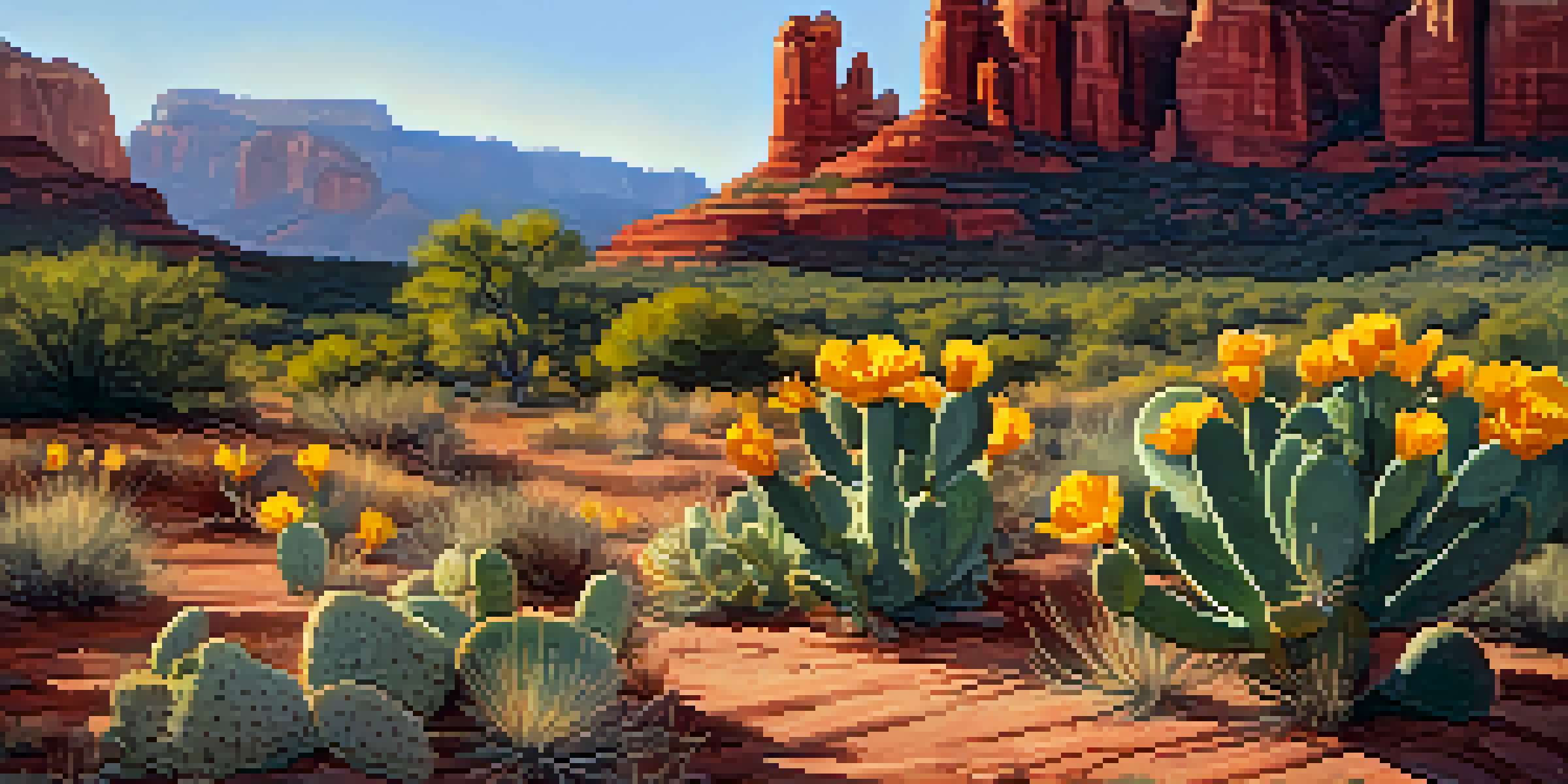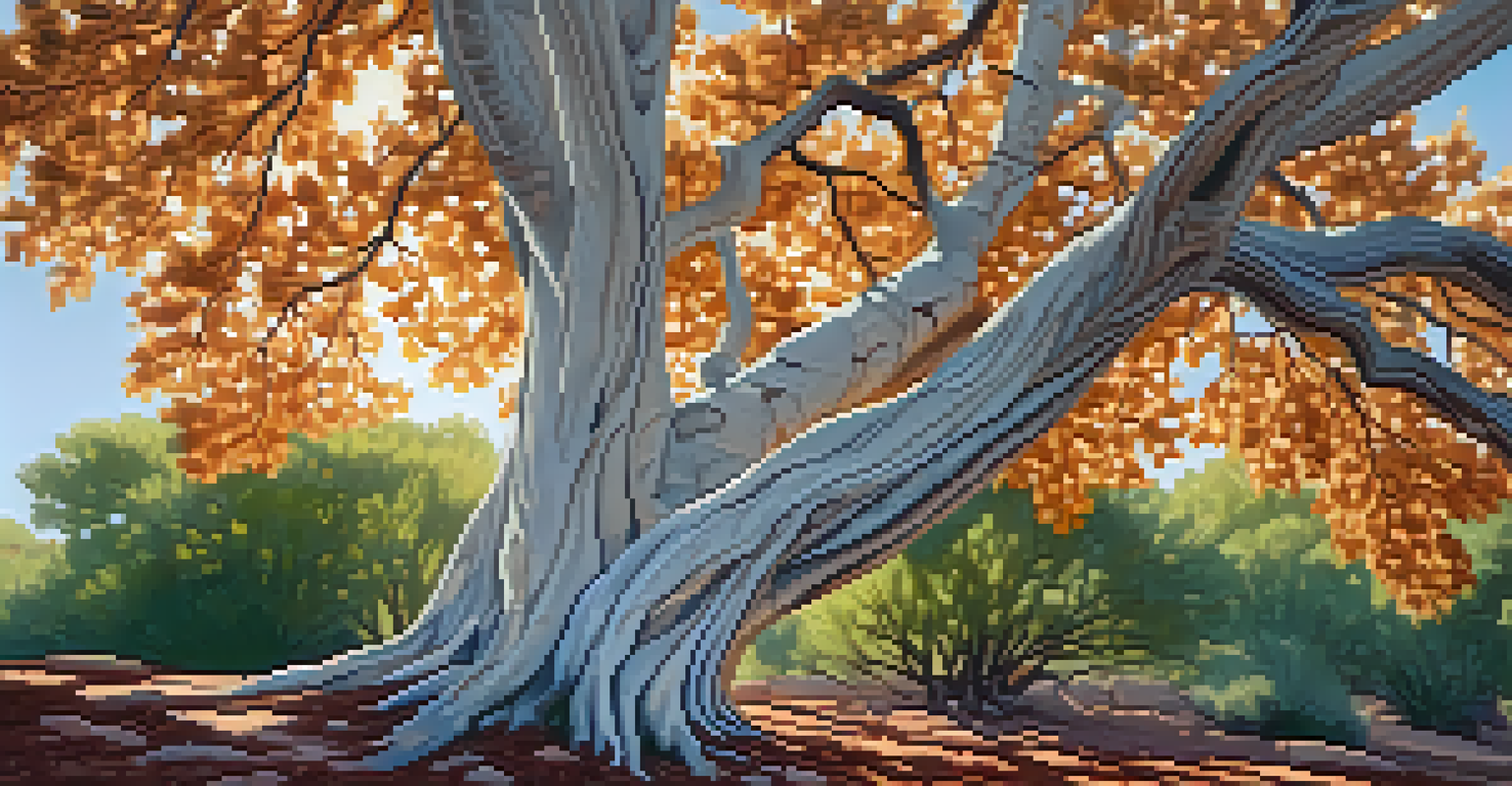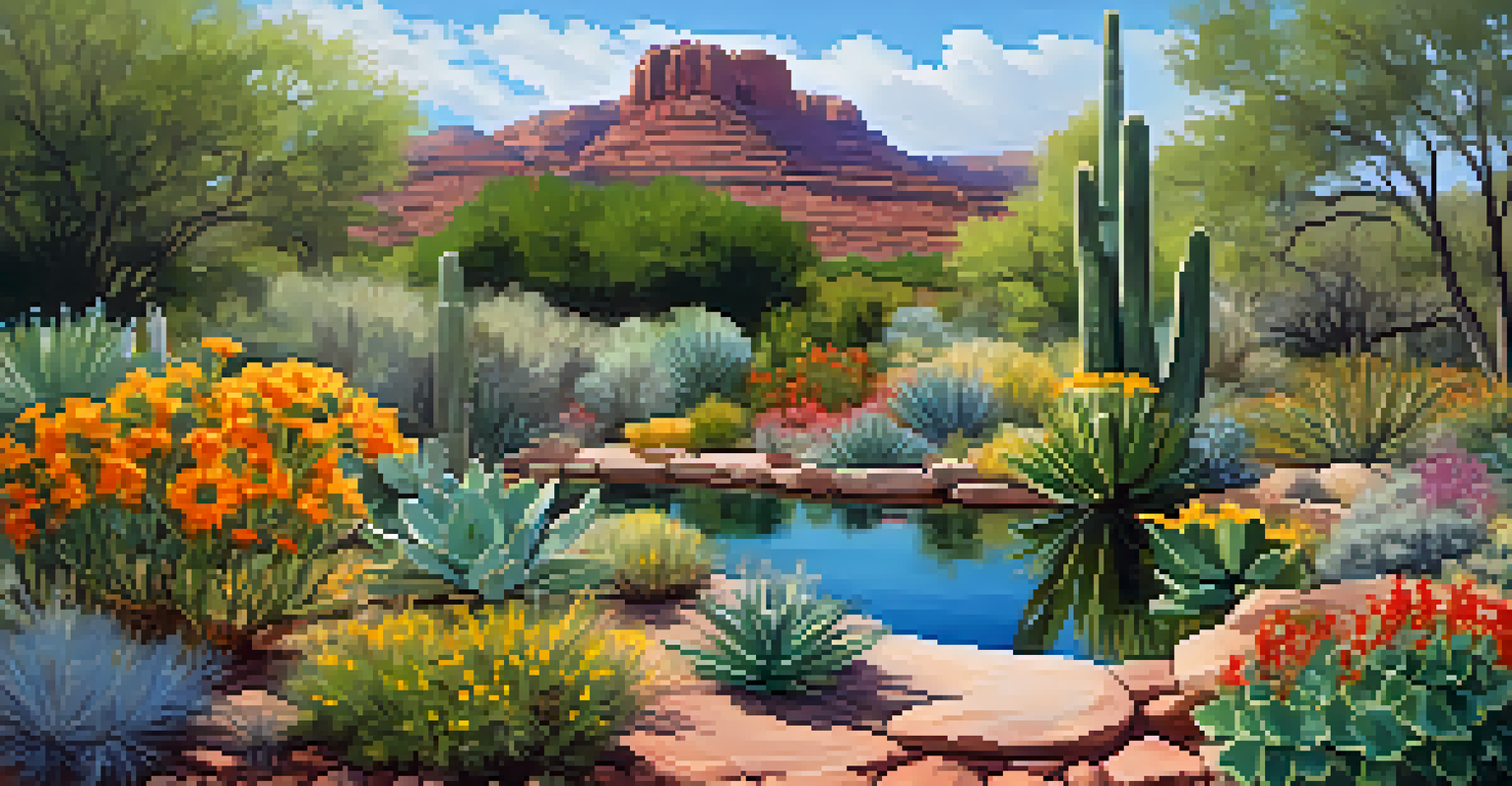Sedona's Flora: Native Plant Species and Their Importance

Introduction to Sedona's Unique Flora
Sedona, Arizona, is known not only for its stunning red rocks but also for its rich diversity of native plant species. These plants have adapted to the region's unique climate and soil conditions, creating a vibrant ecosystem. Understanding these native species is essential for appreciating the natural beauty and ecological balance of Sedona.
The greatest threat to our planet is the belief that someone else will save it.
From prickly pear cacti to vibrant wildflowers, the flora here plays a crucial role in supporting local wildlife. Birds, insects, and mammals all rely on these plants for food, shelter, and nesting materials. By exploring the native plant species, we gain insight into the interconnectedness of life in this arid landscape.
In this article, we will delve into some of the most significant native plants in Sedona, highlighting their characteristics and importance to the environment. Join us on this botanical journey to understand why preserving these species is vital for the region's health.
The Role of Native Plants in Sedona's Ecosystem
Native plants play a fundamental role in maintaining the ecological balance of Sedona. They provide essential habitat and food sources for a variety of wildlife, ensuring that the local ecosystem thrives. Without these plants, many species would struggle to survive, disrupting the delicate web of life.

Moreover, native plants are well adapted to the local climate, which means they require less water and are more resilient to drought. This characteristic not only makes them beneficial for the environment but also an excellent choice for landscaping. By choosing to plant native species, homeowners can create beautiful gardens that support local wildlife and conserve water.
Native Plants Support Ecosystem
Sedona's native plants provide essential habitat and food for local wildlife, maintaining the ecological balance of the region.
In essence, native plants act as the backbone of Sedona’s ecosystem, influencing everything from soil health to pollinator populations. Their preservation is crucial, especially in the face of climate change and urban development.
Top Native Plant Species Found in Sedona
Among the rich tapestry of Sedona's flora, a few native species stand out for their beauty and ecological contributions. The Arizona Sycamore, with its striking white bark and broad canopy, provides shade and habitat for various animals. Its presence along riverbanks helps stabilize the soil, preventing erosion.
Nature does not hurry, yet everything is accomplished.
Another noteworthy species is the Desert Marigold, which brightens the landscape with its cheerful yellow blooms. This plant not only attracts pollinators like bees and butterflies but also helps improve soil health through its deep roots. Its ability to thrive in harsh conditions makes it a vital component of the local ecosystem.
Lastly, the iconic Saguaro cactus, although more common in southern Arizona, can also be found in the Sedona area. This towering cactus provides nesting sites for birds and serves as a water source for many animals. Each of these plants illustrates the diversity and importance of Sedona's native flora.
The Importance of Biodiversity in Sedona
Biodiversity refers to the variety of life in a particular habitat or ecosystem. In Sedona, the rich biodiversity of native plants contributes to a healthy environment, supporting various wildlife species. This diversity is crucial for ecosystem resilience, allowing it to adapt to changes and disturbances.
When native plant species thrive, they create a balanced habitat that fosters interactions among different species. For example, native plants provide food for herbivores, which in turn serve as prey for carnivores. This interconnectedness highlights how preserving native flora is essential for maintaining biodiversity.
Biodiversity is Key to Resilience
A diverse array of native plants fosters a balanced habitat, supporting various species and enhancing ecosystem resilience.
Additionally, a diverse plant community helps prevent the spread of invasive species, which can threaten local ecosystems. By protecting and promoting the growth of native species, we ensure the sustainability of Sedona's natural beauty for future generations.
Threats to Sedona's Native Flora
Despite their importance, Sedona's native plants face several threats that jeopardize their survival. Urban development is one of the primary challenges, as expanding communities encroach on natural habitats. This not only reduces the area available for native plants but also disrupts their ecosystems.
Invasive species pose another significant threat, as they can outcompete native plants for resources like water and nutrients. These invaders can drastically change the landscape, leading to a decline in biodiversity. Efforts to control invasive species are crucial in preserving the integrity of Sedona's flora.
Climate change also plays a role in threatening native plants, as shifting weather patterns can alter their growing conditions. As temperatures rise and precipitation patterns change, some species may struggle to adapt. Understanding these threats is the first step toward implementing effective conservation strategies.
Conservation Efforts for Native Plants
Conserving Sedona's native flora is essential for maintaining the region's ecological balance. Organizations and local communities are actively working to promote awareness and restore native plant habitats. These efforts often include educational programs, community planting events, and invasive species removal initiatives.
One successful example is the establishment of native plant gardens in public spaces, which not only beautify the area but also serve as habitats for local wildlife. These gardens provide a practical way to demonstrate the benefits of using native plants in landscaping, encouraging more residents to adopt similar practices.
Threats to Flora Require Action
Urban development, invasive species, and climate change pose significant threats to Sedona's native plants, highlighting the need for conservation efforts.
Additionally, partnerships between local government, conservation groups, and residents play a key role in ensuring the long-term protection of native species. By coming together, these stakeholders can create effective strategies to safeguard Sedona’s unique flora for future generations.
How You Can Help Preserve Native Flora
Everyone can play a role in preserving Sedona's native plants, starting with simple actions at home. Consider incorporating native species into your garden, as they require less water and maintenance while supporting local wildlife. By choosing plants that are adapted to the local environment, you contribute to the overall health of the ecosystem.
Participating in local conservation events can also make a significant impact. Many organizations host volunteer days for planting native species or removing invasive plants, providing a hands-on way to help the community. These events not only benefit the environment but also foster a sense of connection among participants.

Lastly, educating yourself and others about the importance of native flora can amplify your efforts. Sharing knowledge about the ecological benefits of these plants can inspire others to take action, creating a ripple effect that strengthens conservation initiatives throughout Sedona.